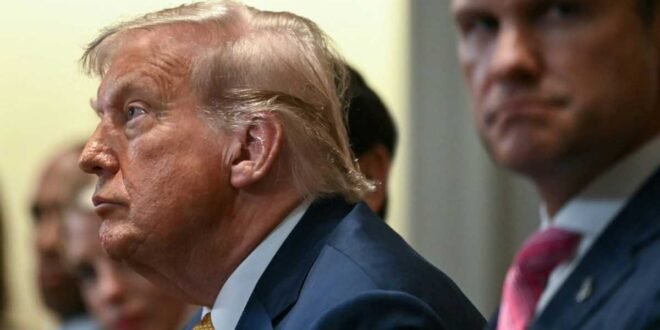U.S. Tariff Letters Target Multiple Nations, Spark Trade Negotiation Tensions
U.S. President Donald Trump has issued a new set of tariff letters to several trading partners, outlining specific duties that could take effect on August 1. The letters were sent to leaders of the Philippines, Brunei, Algeria, Libya, Iraq, and Moldova, with tariffs ranging from 20 percent to 30 percent. This move reflects Washington’s ongoing efforts to push for more favorable trade agreements with various countries.
These latest letters are similar in content to those released earlier in the week, reinforcing Trump’s stance that many of the U.S.’s trade relationships are not “reciprocal.” The president has previously threatened higher tariffs, but he delayed their implementation until August 1. The current letters serve as a warning to these nations, urging them to adjust their trade policies to avoid these increased duties. If they do, the U.S. may reconsider its approach.
The tariff rates outlined in the letters are not drastically different from those initially proposed in April. However, some countries received lower rates this time around. In April, Trump imposed a 10 percent tariff on nearly all trading partners, but he later delayed the implementation of higher rates for many economies. The deadline for these steeper tariffs was originally set for Wednesday, but it has now been pushed to August 1.
So far, 20 countries have received such letters, including major U.S. allies like Japan and South Korea, as well as developing nations such as Indonesia, Bangladesh, and Thailand. Trump emphasized that if these countries change their trade policies, the U.S. might be open to revising its position.
EU Talks Remain a Key Focus
While many Asian countries have been the primary focus of these tariff letters, attention is now shifting to the European Union (EU), which has yet to receive a similar communication. Analysts suggest that the EU is a critical player in the broader trade negotiations, and its response to potential U.S. tariffs could significantly impact global trade dynamics.
Trump recently stated that his administration is “probably two days off” from sending a letter to the EU with updated tariff rates. He also noted that the EU is currently being “very nice to us,” indicating a possible shift in tone. An EU spokesman confirmed that the bloc is aiming to reach a deal with the U.S. in the coming days and is prepared to agree on a framework for negotiations.
EU diplomats have indicated that the European Commission, responsible for trade policy across the 27-member bloc, could continue discussions until August 1. It is expected that the U.S. will maintain a baseline 10 percent tariff on EU goods, with exemptions for certain sectors such as aerospace, spirits, and cosmetics.
Broader Tariff Strategy
In addition to country-specific tariffs, Trump has implemented sector-specific duties on steel, aluminum, and automobiles since returning to the White House in January. On Tuesday, he announced plans to impose tariffs on copper and pharmaceutical products. The proposed rate for copper is 50 percent, while pharmaceuticals could face levies as high as 200 percent. However, manufacturers would be given time to relocate their operations to avoid these penalties.
This strategy underscores the administration’s broader goal of reshaping international trade by encouraging domestic production and reducing reliance on foreign imports. The use of tariffs as a negotiation tool has become a central feature of Trump’s trade policy, with the aim of securing more favorable terms for the U.S. economy.
As the August 1 deadline approaches, the pressure on both the U.S. and its trading partners to reach agreements continues to mount. Whether these tariff threats will lead to meaningful trade deals or further tensions remains to be seen. For now, the focus remains on the EU and other key partners who have yet to receive formal tariff communications.
 Info Malang Raya Its All About World News
Info Malang Raya Its All About World News



